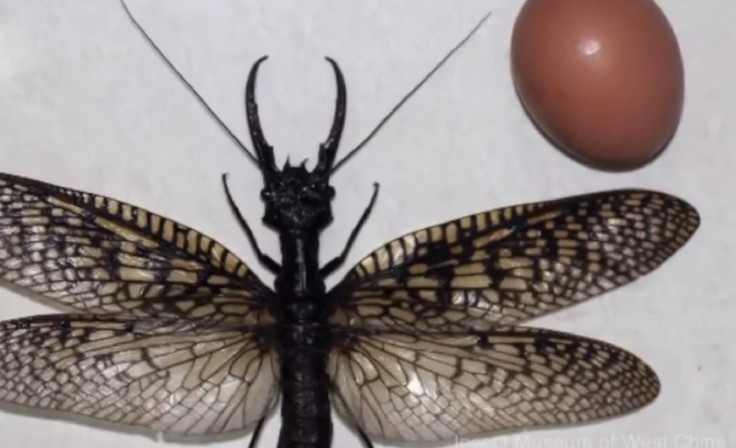World's Largest Aquatic Bug 'Dobsonfly' with Eight-Inch Wingspan Discovered in Southern China
The world's largest flying aquatic insect with enormous pincers has been discovered in China's Sichuan provice.
According to the Insect Museum of West China, local villagers from the outskirts of Chengdu handed over "weird insects" which ressembled "giant dragonflies with long teeth" earlier this month.
Several of the insects were examined by experts at the museum and were found to be unusually large specimens of the giant dobsonfly.
A type of Megaloptera, there are over 220 species of dobsonflies found throughout the Americas and Asia, as well as South Africa.
Giant dobsonflies can be found elsewhere across China, as well as India's Assam state and in northern Vietnam, but this is the first time the insect has been discovered in Sichuan province.

The largest of the newly discovered creatures measured 21cm (8.27in) when its wings were spread, which break the record for the largest aquatic insect - a title previously held by a South American helicopter damselfly, which had an impressive wingspan of 19.1cm (7.6in).
According to CNN, the insect is large enough to engulf the face of an adult human.
Researchers at the museum reported that the insect is known among entomologists as an indicator of water quality.
The giant dobsonfly is highly sensitive to any change in the pH of water, as well as the presence of trace elements of pollutants. It is known to thrive in clean water and if the water is contaminated, the fly will move away to seek a new home.
Dobsonflies derive nourishment from both water and nearby plants. The larvae shelters in the water to increase their chances of survival.
The water bug is yet another addition to the growing list of enormous insects, which includes the mammoth Atlas moth that has a wingspan of a foot. According to the Huffington Post, the giant-version of the bug species weta - similar to a cricket - can easily consume a carrot.
Scientists and groups from Scientific American are currently studying this interesting organism to look for similarities and differences.
© Copyright IBTimes 2025. All rights reserved.






















